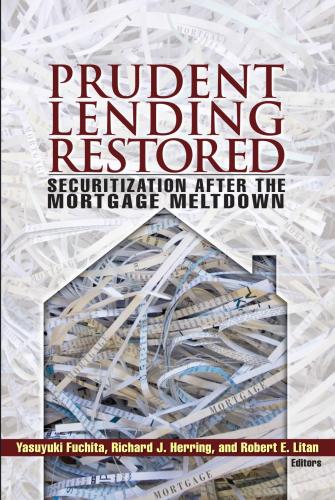Studies in this week’s Hutchins Roundup find that consumer decisions about loan repayment plans don’t conform to economic theory, the Fed’s interest rate increases shifted mortgage lending to riskier lenders, and more. Want to receive the Hutchins Roundup as an email? Sign up here to get it in your inbox every Thursday.
Consumers use simple budgeting rules to choose loan repayments
Do consumers minimize borrowing costs when taking out loans as traditional economic theory says they should? Using data on auto loans, Bronson Argyle and Taylor D. Nadauld of Brigham Young University and Christopher Palmer of MIT find that consumers are disproportionately willing to take on higher interest-rate loans to have lower monthly payments and appear to set targets for their monthly payment amounts on rounded amounts like $200, $300, and $400, rather than choosing the most cost-efficient payments. In addition, they find that when borrowers are offered cheaper loan terms, they are more likely to take out larger loans rather than pocket the savings. The findings run contrary to most standard models of consumer behavior and indicate that consumers use simple budgeting rules to choose loan repayments.
The Fed’s tightening contributed to the growth of securitized mortgages
Some researchers have argued that the Federal Reserve’s monetary policy in the years before the financial crisis was too loose and helped fuel the house price bubble; others have said that lax regulation of non-bank mortgage lenders was the main culprit. Itamar Drechsler of the University of Pennsylvania and Philipp Schnabl and Alexi Savov of New York University say instead that the Fed’s tightening between 2003 and 2006 shifted mortgage lending from the heavily regulated commercial banks to nonbank mortgage originators, which had lower lending standards. As interest rates rose, banks shrank their mortgage portfolios and nonbank lenders more than offset that contraction. They estimate that this shift led to a 10 percentage point increase in the share of loans that were securitized by private labels (that is, not backed by Fannie Mae or Freddie Mac), making the pool of mortgage securities riskier because they were not government-insured or funded by deposits. The results suggest that while monetary policy had its intended effects on traditional mortgage lending in the runup to the crisis, it also had unintended consequences for risky lending.
Advanced economies’ fiscal policies had big boost and drag effects after the financial crisis
Ursel Baumann, David Lodge, and Mirela S. Miescu of the European Central Bank examine how the effects of fiscal and monetary policies on GDP growth have varied across advanced and emerging market economies since the global financial crisis. They show that in the last decade, the effect of fiscal policies varied significantly across countries but tended to be larger, per-dollar of government spending, in advanced countries than in emerging markets. In contrast, monetary policies had larger effects on GDP in emerging markets than in advanced economies. Between 2008 and 2011, monetary and fiscal policies jointly boosted global growth, but after 2011 policy paths diverged: In emerging markets, monetary policy tightened and dampened growth while in advanced economies, monetary policy remained loose but fiscal policy became restrictive.
Chart of the week: US wage growth has been more dispersed for men than for women

Quote of the week:
“For a long time, market power was of little interest to macroeconomists, including central bankers. … Market structure and market power have gone from being a field studied by microeconomists to one studied by both micro- and macroeconomists. There are good reasons for this: a change in market power could have important macroeconomic implications. For the euro area, available evidence suggests that the market power of firms…has remained broadly unchanged in recent years. The positive side of this is that there is little evidence that the euro area has seen a rise in ‘bad’ market power – market power which results in productive and allocative inefficiencies. However, on the negative side, the euro area has also not seen the emergence of superstar firms – highly productive large firms with rising market shares. Instead, the euro area may be facing increasing competition from large global firms. Moreover, in an increasingly dynamic and digitized world, significant and rapid changes in market structures across industries may occur at any point in time,” says Peter Praet, member of the Executive Board of the European Central Bank.
The Brookings Institution is committed to quality, independence, and impact.
We are supported by a diverse array of funders. In line with our values and policies, each Brookings publication represents the sole views of its author(s).










Commentary
Hutchins Roundup: Borrower behavior, the Fed’s role in the housing boom, and more
March 21, 2019